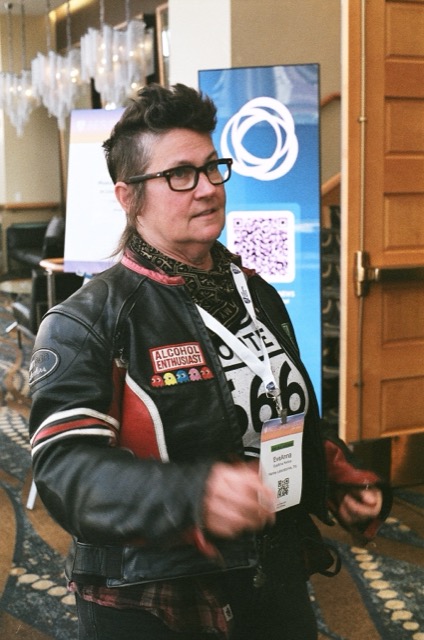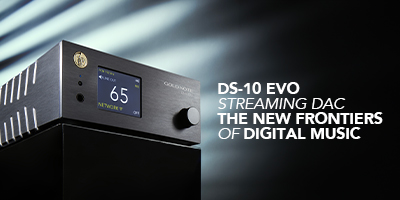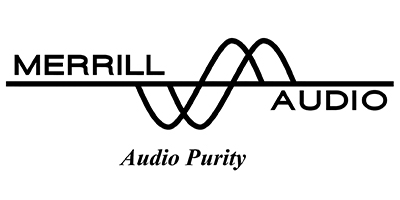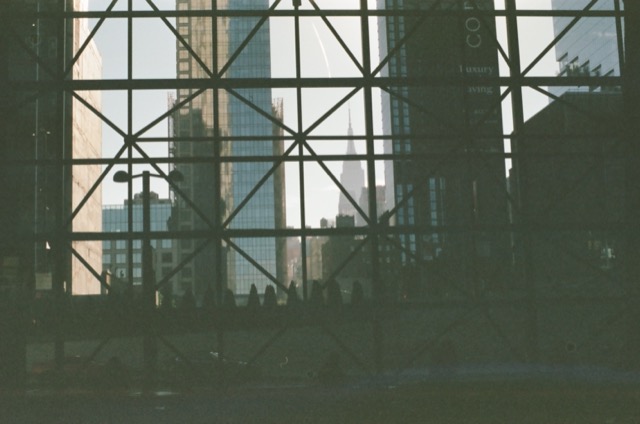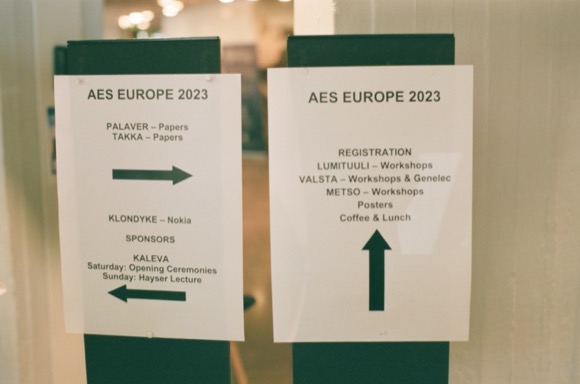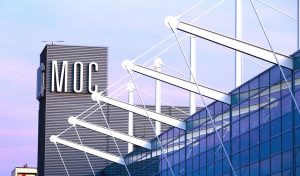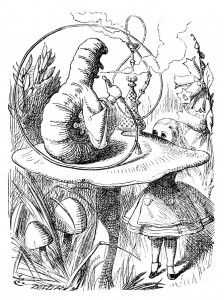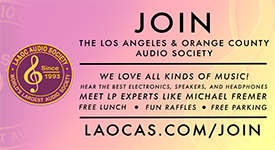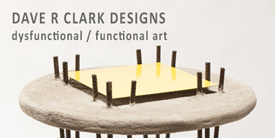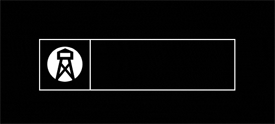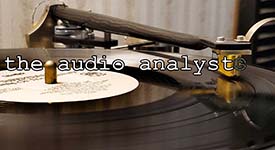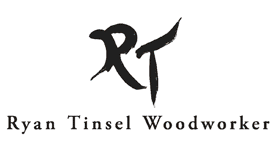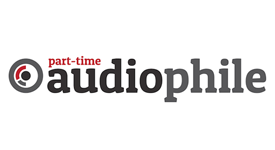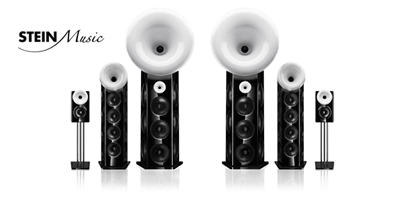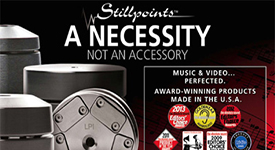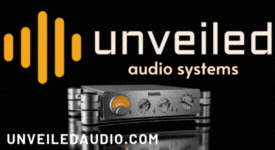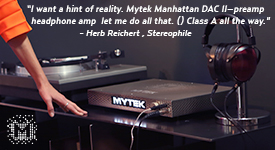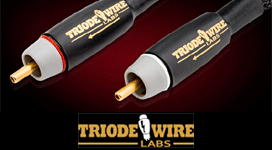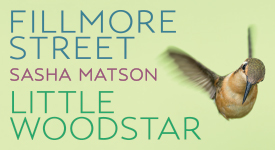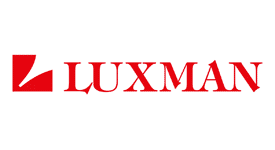
When I first started going to the AES show, it no longer was run by the first generation of audio enthusiasts who had started the show. You could still see Paul Klipsch in the hotel lobby yelling about amplifier distortion, and Norm Pickering and Les Paul could be seen out on the show floor, but they were no longer running the show. They had turned it over to a new generation of young kids who were also enthusiasts, and the show was growing.
Starting around the COVID era, those young enthusiasts were all getting out of the Society, either from death or retirement. They weren't so young anymore, and the Society was turning things over to professionals. Frank Wells, who had handled press relations and communications for years was replaced with a professional communications guy. So much of the convention management for years was done by Michael Williams, an audio-for-video expert going way back, and his wife Sue handled membership and registration. Convention professionals from a company that specializes in running conferences took over and didn't do very well, but the AES has returned do doing their own management this year. This is a matter of changing horses in mid-stream and so of course there has been some disruption, but the show happened in spite of it all.
The AES is a foundation supporting research and education, and there are basically three ways that is accomplished at the show.
Posters and Papers are expected to detail new research or new technology, and they come with a written document which can be found in the AES library. When I mention them in this article, I'll give the numbers by which they can be ordered.
Workshops and panels are educational items, with people talking not about anything necessarily innovative, but about things which are important and which deserve to be publicized. There are no written records of what happens in these, so you have to be at the show to have the experience.
Exhibits are vendor presentations, either down on the show floor or in specific vendor exhibit rooms, where vendors are showing off their products and marketing them. For some people this is the only part of the AES that they see, but there is much more at the show. There is usually downloadable marketing information about the products shown in exhibits.
This year, there were very few exhibits, only 35, which is perhaps a tenth of the number there were in the years of the largest shows. Also, this year there were few paper and poster presentations, and most of them were posters which are somewhat less prestigious presentations. Both of these are bad, because exhibits bring in the money that helps the show run, and because papers and posters bring in researchers and scientists who are the core of the AES.
To help make up, however, there were more workshops than usual, especially considering the tiny size of the show thanks to the first two items. The workshops were great, too, with a lot of different educational events that I think have brought more students in, and that is important to the future of the AES.
In this report I am going to mix up all three of these different kinds of presentations in an order that may only make sense to me, because they all feed into one another.
Loudspeakers
I went to a panel discussion called "Sticks and Tones - The Column Speaker Rage" with Jonathan Novick, Ralph Heinz, and Chris Smolen, where they discussed the current craze for small column speakers in small PA applications and on the advantages and disadvantages of them compared with traditional point source speakers. They do produce a narrower angle of radiation vertically but because they are lower to the ground it's hard to cover the rear of the room. They don't weigh less than single-point systems of similar performance but they can be disassembled and carried in pieces. But they aren't much like line arrays suspended up high even if marketing people want you to think they are. An excellent overview of the good and bad and an example of what I mean when great workshops are being brought in this year.
Richard Batelaan from the Papdimos Group spoke on "Improving Speech Intelligibility for PA Systems in Airport Holdrooms" in which he spoke about methods to control sound in bad acoustics. While he did talk about acoustical improvements, a big part of his method was the use of array speakers with better pattern control to get sound to listeners instead of to reflective surfaces. This wasn't anything new and innovative but it was a good discussion of method. I think this would have been better off as an educational workshop than a paper, but because it was a paper you can read the summary. AES Convention Express Paper 403.
And there's still work being done on horn loudspeakers, because pattern control and high directivity is critical in many sound reinforcement applications. A lot of work is being done by JBL, and Alex Voishvillo, Sebastian Thony, and Tommaso Nizzoli had a paper called "Phasing Plug Of Compression Driver With An Improved Directivity At High Frequencies" which was mostly presented by Mr. Nizzoli. This presents an improved phasing plug which provides a very slightly concave wavefront at the entrance to the horn. You want a large horn entrance to get high output levels without issues from nonlinear compression of air. But to get an even high frequency response across the soundfield you need as small as possible a horn entrance. Trick phasing plugs can help get a more even field, slightly bending the wavefront by having a longer path through the plug for sounds at the edge of the wavefront than for sounds at the center. This is not some old Altec 288, this is an application of advanced modelling technology toward reducing compression driver resonances and reducing beaminess of the compression driver/horn system. AES Convention Express Paper 384.
Headphones
Not a lot of headphone stuff this year, though Audeze was there and showing off a lot of phones including the LCD-S20 closed back headphones which are starting to get some interest in the audio production world where isolation is always a big deal.
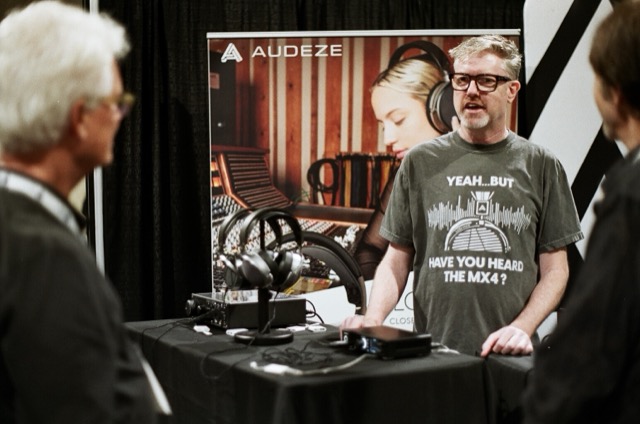
There were a few papers about headphones but I'd like to call your attention to "The Impact of Head Movements on Binaural Externalization Across Varying Demographics" in which Garrett Treanor from NYU was curious about head-tracking systems and how well they improve perception of space presented binaurally using a generic HRTF. Interestingly they found no differences in different age groups or people with different amounts of experience with binaural recordings, but they found great differences between people with differing amounts of musical experience. AES Convention Paper 10253.
Microphones
Sony was showing off their ECM-100N omni and ECM-1000N cardioid microphones. These are small diaphragm condenser microphones in a pencil format that have very extended high frequency response. They are mostly being aimed into the broadcast industry and quite specifically at people who are doing slow motion and want to slow the sound down along with the picture and who correspondingly need very extended high end. An interesting microphone with some interesting characteristics that might be worth considering in the studio as well. These were actually introduced almost seven years ago but I'd never seen them until today.
Austrian Audio is a company that was started by former AKG employees a few years back and they are making headphones and microphones with some AKG lineage but with rather different and more advanced technologies. At the show they were introducing the OC-510, a new large diaphragm condenser microphone using a new capsule designed around their ceramic body technology. What's interesting about this mic is that it supplies an omni and figure-8 output which can be mixed together in post to provide the ability to change the microphone pattern in mixdown instead of at recording time. This also gives you the freedom to EQ the two elements differently to create patterns that change with frequency if that's your thing.
Sanken, a Japanese manufacturer that deserves to be better-known in the US, was showing a tiny microphone called the CUP-X1 It's a rectangular-capsule cardioid mic that is larger than a lav mic but much smaller than a typical pencil microphones, great for applications where the microphones need to avoid being noticed on stage.
Matthew Cheshire's poster from Birmingham City University in the UK was on "Perceptual Evaluation of varied kick drum microphones with and without post-processing." It was interesting but the author tried to do too many different things at once and wasn't able to control for a lot of variables. He recorded an open kick drum with various microphones but internal and external, then asked skilled engineers to rate the tracks, and then to rate versions which someone had equalized to sound the way they wanted. The results were consistent with a few microphones coming up ahead. The problems with this begin with the fact that different mixes and different styles of music want completely different kick sounds; what might be perfect in a modern pop mix won't go if you want the 80's Athens sound. So engineers likely have different preferences depending on what they most often work on. But it was extremely good to see the difference between pre-eq and post-eq since so much of the sound of the modern rock kick drum comes from microphone overloading, and EQ can change the sound but it can't make mics that overload differently sound identical. I think this is a good start but a more tightly controlled study needs to be done. AES Convention Paper 10239
In "Impact of Steered Height Microphones of Large Source on One's Immersive Listening Experience, Jessica Luo and Paul Geluso from NYU talked about height channels in object-oriented audio. Object-oriented systems like Atmos allow you to steer different microphones to different speakers on the fly. If you record a piano or a drum kit with a minimalist surround miking system and then add height microphones, where do you need to place the virtual position of the playback for the height microphones to get the most realistic impression of the room? The authors found that the placement was by no means critical and did not significantly impact perceived realism. Even more interestingly, the listening panel preferred different positions for the recordings made with the drum kit vs. those made with the piano, possibly due to them being experienced listeners with different expectations of the two instruments. AES Convention Paper 10254.
Bob Lee, KN6PXS, from RF Venue, Inc. gave a great workshop called "Gigging in a Wireless Hellscape." He talked about the history of wireless microphones and about how as time has gone by, acts have become more dependent on wireless and have needed more and more channels to make their stage presentation work the way they wanted. At the same time, with so many more channels in use, the available frequency ranges have been restricted as so much of the television band frequencies have been repurposed for other uses, and more stations have come on the air further restricting the available channels. This makes frequency coordination critical and difficult in a world where typical wireless systems require signal 20dB over the noise floor for full FM quieting. What's worse, wideband noise sources like cellphones, video walls, and noisy electronic instruments are now right on stage with the performers, degrading performance additionally.
What can be done? More directional antennas. Circular polarization so the transmit antennas can be used in any position and multi-path effects are reduced. Single antennas into distribution units feeding multiple receivers instead of a huge array of receivers with individual antennas stacked up and affecting one another's patterns. Bob can sell you some of these solutions but he was very careful about not making this a marketing talk. It was a great introduction to the mess that is UHF wireless today, and I wish he'd had a chance to talk about some of the newer wireless technologies like UWB but you can only say so much in an hour.
Listening
In the paper "Effects of Colored Lighting on Audio Quality Perception," Omar Urrutia and others from Belmont University wondered about room lighting effects possibly altering the way people perceived music. They played classical music samples for trained listeners who rated the samples on several different scales. They found a small but significant contribution to the listener's scores caused by the room lighting. Takeaways from this were to avoid dramatic blues and yellows and that basic natural light is a good plan. AES Convention Express Paper 375.
Can music really make you move? In her poster "Study of the Influence of Binaural Recordings on the Activation of the Motor Part of the Brain," Klaudia Piazek and Dorota Mlynarczyk from the AGH University of Krakow found that listening to soundscapes and music resulted in increased activity of the motor cortex, as measured by a simple two-channel EEG system. This was more the case for the soundscape. Is this conscious or unconscious or reflex behavior? They theorize that this is the result of motor imagery processes and it might be but it might also be a consequence of the brain actually stimulating small motor actions. This poster creates more questions than it answers and that is always interesting. AES Convention Express Paper 397.
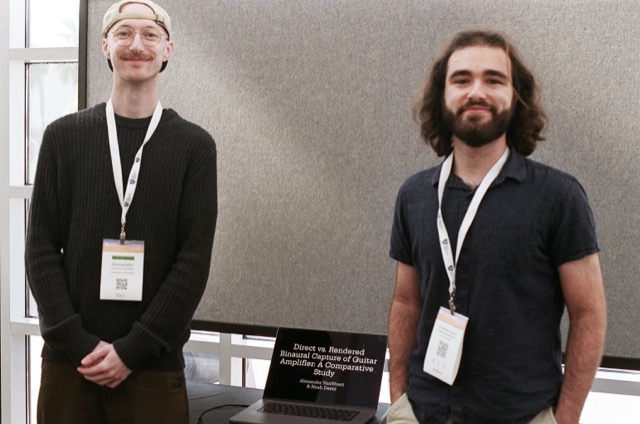
Another odd poster was "Direct vs, Rendered Binaural Capture of Guitar Amplifiers." Alexander VanWert and Noah Deetz from American University recorded a guitar amplifier with an omni measurement microphone and a binaural head in the same location. Then they used the standardized HRTF of the binaural head to "spatialize" the mono microphone as if it was in the center of the soundfield. People on the whole preferred the actual binaural recording, presumably because the room effects were recorded accurately with the binaural head whereas the mono recording contained only mono room cues that could not be accurately spatialized. The difference was greater when the microphones were pulled back six feet than when they were recorded two feet away, presumably because the increased amount of room effects exaggerated the differences.
I found the original presentation a bit confusing because the author was referring to the measurement microphone as an "M50" which to my mind implied a Neumann M50 omni, and I had trouble understanding why someone would test with such a beamy microphone (even if it is one that sounds great on guitar amps). However, upon reading the physical paper it turns out they were using an Earthworks M50 measurement microphone which makes much more sense. AES Convention Express Paper 362.
Processors
AudioScape Engineering was showing an updated copy of the classic Urei LA2A limiter, called the AS-2A. Always good to see this sort of thing being done even if it's not innovative because it helps introduce younger people to familiar sounds.
What is innovative is the class D amplifier, which is appearing everywhere and which is becoming increasingly clean and transparent to the point where it's even starting to turn up in audiophile gear. And what turns up are often the amplifier modules from ICEPower in Denmark, which can be easily implemented into larger designs. They were introducing a number of new models which they will sell in quantities small enough for the audiophile market.
Another thing important to all of our lives is the DAC, and in "A High Current Range, Low Distortion, Continuous-Time Current Output DAC with all-FIR Interpolation Path," David Singleton and others from Cirrus logic detail a new plan. Now, Cirrus was one of the early innovators in sigma-delta conversion way back in the nineties and their chips appear in a lot of high-end DAC units. Over the years they have got better and better and while we have not seen any life-changing revelations like we did in 1990, slow and steady progress is being made. In this paper, they detail a new DAC design that uses a finite-impulse response filter with very large coefficients in order to convert the PCM input signal into a PWM signal that goes to the 1-bit DAC itself. FIR filters sacrifice latency to get better phase response and reduced ringing, and in playback applications latency is not important but phase response could be. Expect to see this technology being implemented soon. AES Convention Express Paper 374.
Over in the show floor, John LaGrou was demonstrating the Imersiv D-1 dual-path DAC. This uses two actual DACs at different levels and while this isn't the first time this has been done, I think it's the first time that anyone has got this wide a dynamic range out of an audio DAC. I mentioned this in my write-up of the New York show but at this point this is a product that you can actually buy and have in your home.
Tape
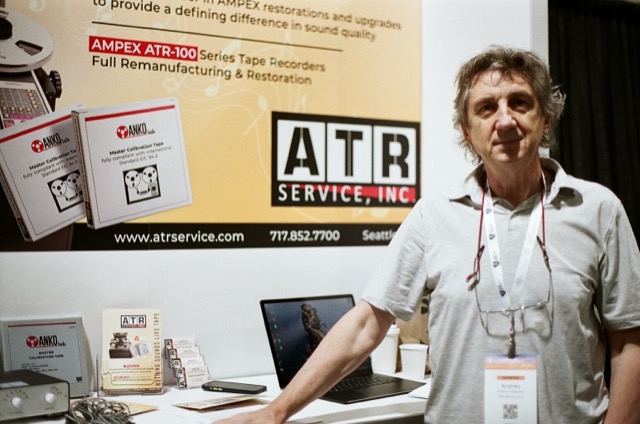
ATR Services Booth
Andrey Kosobutsky was there from ATR Services Company, an outfit in Seattle which specializes in repairs and parts for the Ampex ATR-100 and a few models of Ampex multi-track recorders. They were selling a modern flux loop system, the model MFS-3, which can be used to calibrate the heads and electronics in the absence of an alignment tape, and with higher precision than you can get from an alignment tape. This allows you to test the electronics and head magnetics in the absence of the transport entirely to help isolate small and touchy problems. This is not a tool for every tape machine user or ever shop but it's one that you need when you need it. ATR does of course also sell alignment tapes and some of the other tools you need for more routine alignments.
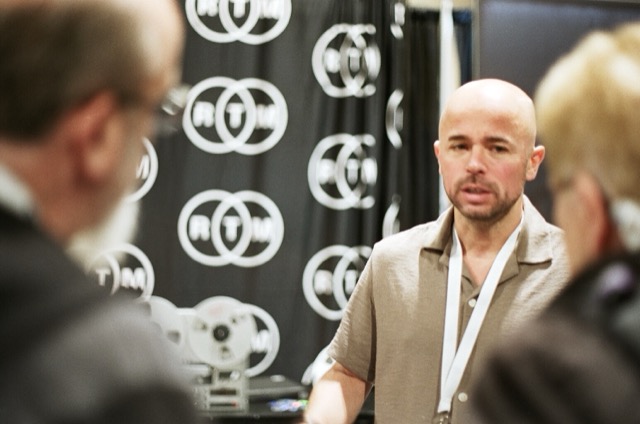
RTM (Recording the Masters) currently has the formerly Mulann, formerly RMGI, formerly BASF, formerly Agfa tape formulations for sale and they also had a booth with their excellent product.
Parts
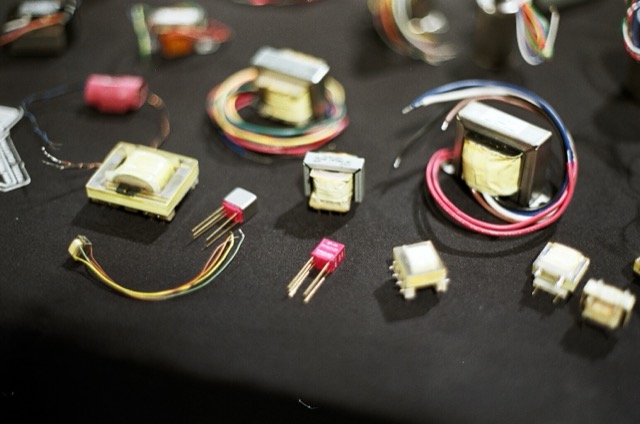
Only one component vendor there at the show, sadly, but it was Triad Transformers which sells a large array of new and historic transformer designs. Last year the big deal at the show was that they were re-introducing the old HS-series transformers that appeared in so much tube gear of the fifties and sixties, including their great interstage coupling transformers. This year they are introducing some stripped down versions of those same transformers with PC board mounting instead of being potted in cans with terminals for hand-termination. These new parts still have HS part numbers, and are functionally equivalent but less expensive than the designs they are adapted from and more friendly for modern construction practices. Though of course if you want to pay a bit more for the original packaging, those are still available too.
Acoustics
Agnieszka Puzio and Bartlomiej Chojnacki from the AGH University of Krakow talked on "Comparison of Numerican and Experimental Analysis Approaches in Small Room Acoustics Below the First Modal Frequency." For many years, traditional acoustics didn't pay much attention to small rooms, but as more and more music started being recorded and played back in small spaces, more work was done investigating room modes and the various resonances at the eigenmodes of room. But even now, few analyses pay any attention to evanescent modes below the first room mode, but just treat the room as a single resonant unit. The authors compared finite element models of a room with measurements made at very low frequencies and found FEM a valid method for analyzing these. AES Convention Express Paper 396.
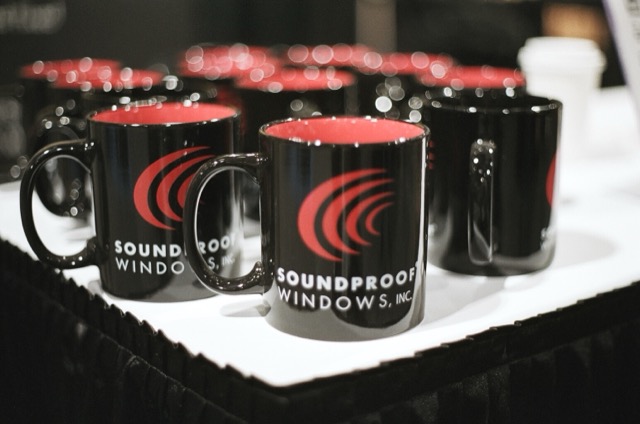
Soundproof Windows was giving away giant coffee mugs but also showing off some brand new studio door designs which have a larger glass area for a better view, while having higher sound isolation levels than ever. They are a variant of their usual AGD acoustic glass door units. These are not cheap but these are amazing for a serious studio or even a serious home listening room.
PSI Audio was again showing off their active bass trap. I have written about this before many times but I want to mention it again because this is another amazing tool for control of low frequencies in small rooms that deserves more attention and deserves more use in home listening rooms. This gives you more absorption per unit volume than any passive bass trap can give you, meaning you lose less space for better low frequency control. Small rooms are always troubled by low frequency modes in the best of situations but these can help.
Records
Big Ribbons is a new record label being started by Ryan Sillifant and Wes Dooley, formerly from AEA Ribbon Microphones, issuing all kinds of audiophile recordings made on DSD using ribbon mics. I won't say anything more here because you can expect them to be reviewed elsewhere in Positive Feedback (HERE), but I am expecting good things from these folks if only because they have a history of good sound behind them.
I will say also that I went to a number of record stores in Long Beach while I was at the show, including a combined cigar and record store which seemed like a bad idea to me. At one of these stores I found a CD I had worked on in the 80s selling in the $2 bargain bin and there's really nothing more depressing than that.
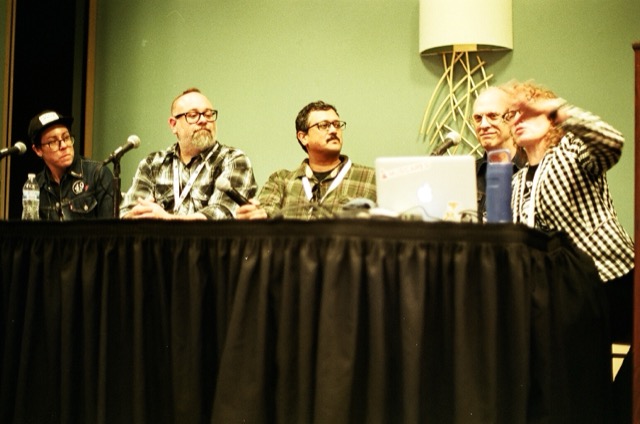
Another great workshop was the panel "All Your Audio Digitization Questions Answered" with Dan Johnson, Catherine Vericolli, Kabir Hermon, Michael Graves, and Jessica Thompson. They talked about tapes and lacquers and spent most of the assigned time answering audience questions about playback of various media. This kind of educational seminar is one of the things that worked better this year than most, and I think it also helped open the eyes of some younger people about playback of old media.
A somewhat more unusual workshop was Open Sourcing Immersive Vinyl by KamranV. The name was a bit of a misnomer because today we think of "Immersive" systems as providing height, width, and front-back imaging, while this is basically the story of issuing a quadrophonic record in the twenty-first century. KamranV made some quadraphonic mixes through a QS encoder and had Bernie Grundman cut them onto disc. While I was not a friend of quad back in the seventies, I know that some readers of this magazine are, and if you are you should know that there are some new QS releases being made today. The mixes demonstrated were very busy ones to say the least, much like so many of the quad mixes of the seventies.
I should point out also that this, like a number of the workshops involving multichannel sound, took place in an "immersive room" provided by Adam Audio and Focusrite, It was a bit small for the number of people using it, but it was very serviceable for demonstrations.
Classical Music
There was a workshop called "Classical Recording Techniques for Every Audio Career" with six experienced classical recording engineers talking about how classical recording comes from a tradition of reproducing an existing sound rather than creating a new one, and how "the room is one of the instruments" since it's the room that is being mic'd instead of individual parts of the ensemble for the most part. "Taking a hundred musicians and jamming them into two loudspeakers" is the name of the game. I thought this was a bit introductory and I would like to have seen more technical discussion and arguments about what an orchestra really should sound like, but it was the perfect talk for the student audience that they had. Unfortunately due to terrible room lighting we couldn't see the panelists but just to be complete let me say they were Jett Galindo, Garrett Humble, Richard King, Scott Metcalfe, Hyunjoung Yang, and the moderator Scott Burgess. It was great seeing so many people with different recording philosophies all getting together and the room was absolutely packed. This was the last event of the last day and it's not a subject that you would expect to bring a lot of people in but it was filled. We need to have more classical recording discussions in this world because the philosophy of reproduction is important for everyone to be exposed to.
History
Irv Joel from Capitol Records led the historical committee at the AES back in the nineties and he started the Oral History Project where over 123 notable audio people were interviewed. Committee members have helped to get most of those interviews online and visible to AES members in the AES Live video collection, and some of the more popular ones can be seen by non-members.
In 2021, Dan Mortenson did another 45 interviews since, and as the AES website has been changed dramatically several times since this process began a lot of work had to be done to keep these available.
But the historical folks are once again doing interview and getting them online, for a permanent record of the changes in the industry. So many of the people interviewed are no longer alive, and so many of the people who helped me start when I was younger died before they could be interviewed.
Consequently there was a workshop panel discussing the interviewing program, with Brad McCoy, Scott Burgess, and John Chester all talking about the current state of the oral history project, as well as a room upstairs where they were conducting interviews with some people for future presentation.
Organizations and other stuff
Another interesting panel that doesn't really fit anywhere was the Audio Design Round Table, in which some well-known electronics designers sat down with a recruiter and talked to students about a career in electronics design and how they got into audio electronics. Tony Agnello and Richard Factor from Eventide, Paul Wolff, Doug Fearn, and Ani Simon-Hart from Interfacio talked quite a bit about changes in the industry and about how they got started. I would like to have seen a bit more technical discussion but again there's only so much you can do in an hour. This wasn't as good as going to the bar with a bunch of old design engineers, but it was available to a lot more people at once. This was a career item and a historical item and sometimes a design philosophy item.
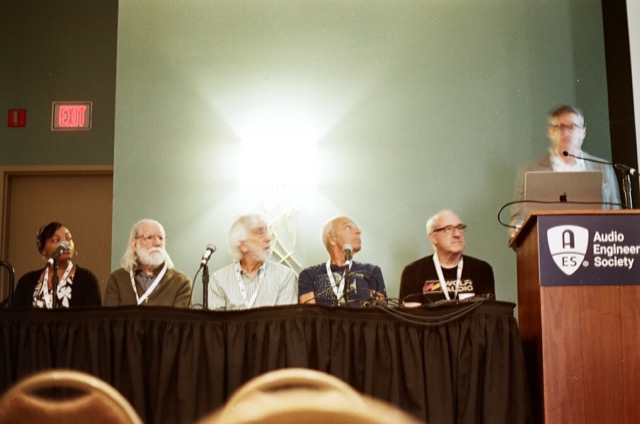
The Cinema Audio Society had a booth as well, and I don't remember ever seeing them at an AES show before. They're a professional organization for sound recordists and mixers and post-production folks and anyone involved in cinema sound. They have a great magazine, the CAS Quarterly and they do a lot of educational work for the folks in that industry. If you are ever interested in a career in film sound they are the people to talk to.
And "We Are Moving the Needle," an organization devoted to getting more women into the audio industry also had a presence there. They provide a whole lot of services for women, from scholarships to mentoring opportunities, and are an organization that deserves your support.
Normally we see a lot of magazine folks at the AES but there were very few this year with most of the regulars not being present. I was interested to see reps from Music Connection there, though. Music Connection is a magazine for musicians that has been around for many decades and which provides information about new products and facilities like studios and mastering rooms that may be of interest to musicians. This is exactly the sort of magazine that would be at NAMM but would never be represented at the AES show and it's good to see folks there. This is another sign that the AES is transitioning into the production world as well as the design world.
I went to Cambodia Town with a bunch of audio people and somehow we found ourself at the UDOM Khmer nightclub on an evening when they had a young Khmer singer. The food was good if the music was a bit too loud. Apparently this is one of the places where the band Dengue Fever got their start. Also recommended.
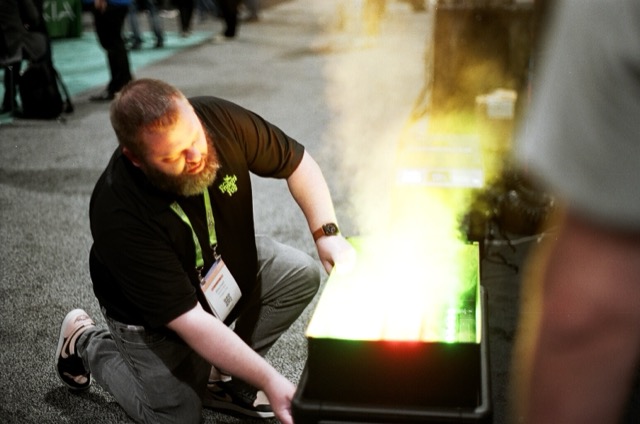
Unfortunately the fog machine at UDOM was using a fog material that left a lot of residue, unlike the clean fog from Froggy's Fog. Froggy's always seems to be a little bit out of place at a purely audio show, but I will say that as an audio guy who has had to clean a lot of fog residue out of microphones that I have certainly encouraged the stage crews to use it. So clearly it's been effective for them if there are more people like me.
Standards
The standards committees used to all meet at the conference and this was additional motivation for companies to send their most senior engineering staff to the show. During COVID the standards groups met online, and now in the post-COVID era they are meeting online the week before the conference to talk about standardization.
There are still some important standards being worked out, but a lot of the more interesting ones have fallen by the wayside. This isn't the fault of the AES but of manufacturers themselves. The Microphone Standards Committee stopped meeting completely, while still in the process of trying to establish standards for microphone sensitivity that could be compared between different manufacturers and ways of measuring wind sensitivity and pop sensitivity for vocal microphones.
Much of the problem is that the old-line microphone manufacturers, which were run by engineers, are being taken over and run by business people with less of an interest in standards that could in the long run benefit their competitors as much as them. The change in the industry itself has made proper standard measurements less valuable to the people who are most able to establish them.
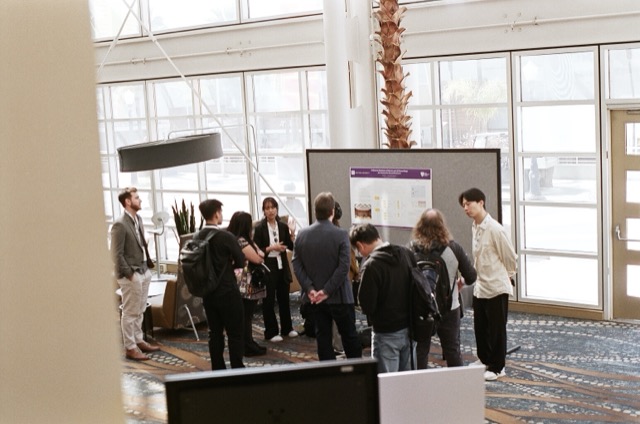
Observation
The industry is changing and the AES is changing with it. So many of the old-line manufacturers have gone away and the engineers that managed them are gone, being replaced with a new generation of more business focussed people, just like is happening with the AES. I think this is a terrible thing, but of course I am one of those old-line guys who should be expected to say that. You can't blame the AES for the changes or for their attempts to react to the changes.
